Last week’s class showcased one of Mexico’s most celebrated and delectable moles: Poblano mole. Originating from the kitchens of the Convent of Santa Rosa in Puebla, its popularity was evident from our guests’ enjoyment, and now I’m thrilled to share this exquisite dish with you.
The term “Mole” might evoke excitement and perhaps a touch of trepidation in the kitchen. Derived from the Nahuatl word mulli, mole essentially refers to a rich, complex sauce or paste. Traditionally crafted by grinding ingredients together in a molcajete or a communal mill, a food processor also works wonders for modern cooks. This concentrated sauce is then thinned with broth or water to achieve the perfect consistency when ready to serve.
While Mole Poblano, with its extensive ingredient list and intricate preparation, might seem like a daunting entry point to the world of moles, rest assured, there are simpler variations. Some moles, requiring just 4 or 5 ingredients, are incredibly easy to prepare without sacrificing any of the authentic, vibrant flavors.
However, my heart belongs to the Poblano, and I’m confident it will capture yours too.
Through numerous trials, I’ve refined the easiest method to create an authentic and flavorful Mole Poblano. The secret lies in meticulous preparation – what the French call Mise en Place and Mexicans call Estate Listo! – having all your ingredients measured, prepped, and ready to go before you begin cooking. Once you’re organized, crafting this mole is a manageable and rewarding culinary journey that takes about an hour. Trust me on this one. Let’s dive in.
As we explore the ingredients, we’ll uncover some essential mole fundamentals.
Four types of chiles are fundamental to a classic Mole Poblano: the reddish Ancho (known for its bittersweet and fruity notes), the black Mulato (offering sweeter, chocolatey, and richer undertones), the raisin-colored Pasilla (delivering a deep, intense, and slightly bitter edge), and the tobacco-hued Chipotle (bringing smoky, robust, and spicy characteristics).
To truly earn the title of “Mole,” a sauce needs more than just chiles. Simply adding a jalapeño doesn’t make it a mole. Certain chiles harmonize beautifully, while others don’t. Some are suited for specific types of moles, and others are not. This quartet of chiles—Ancho, Mulato, Pasilla, and Chipotle—is truly a “Fantastic Four” in the world of mole.
Mole Poblano also boasts the clean, bright flavors of white onion, a measured amount of pungent garlic, the refreshing tang of tomato, and the characteristic tartness of tomatillo.
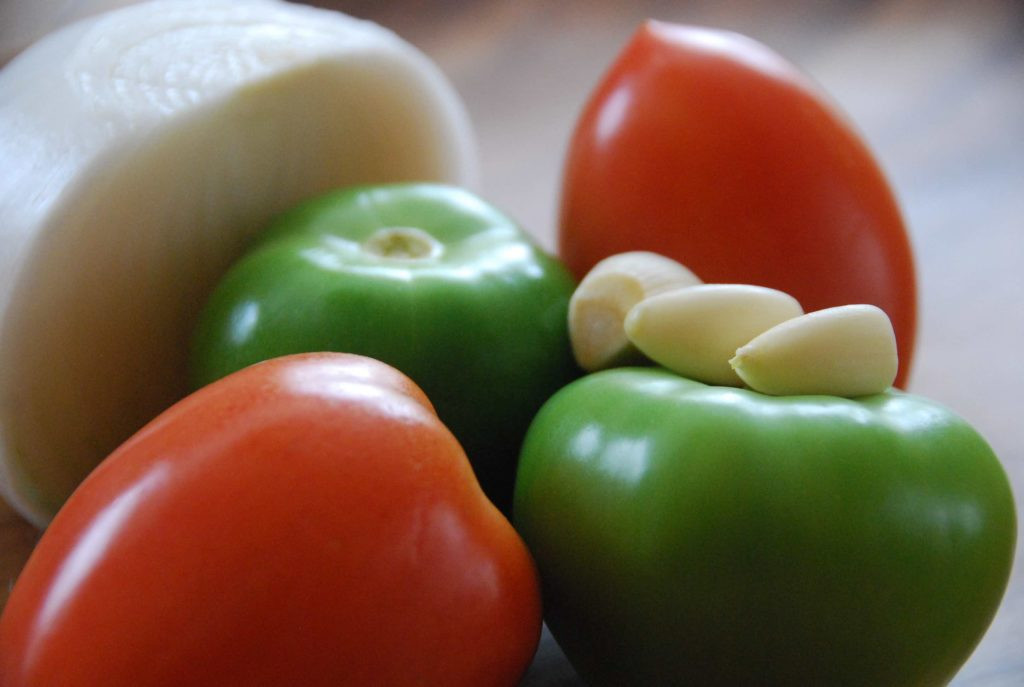 Mole Poblano 2
Mole Poblano 2
Moles are a testament to the profound fusion of indigenous Mexican cuisine and Spanish culinary influences. Three centuries of colonial life profoundly shaped our food. Onions and garlic, along with many of the nuts, fruits, and spices we’ll incorporate, are a legacy of this historical exchange.
Native ingredients like peanuts and pumpkin seeds, often used as thickeners and flavor enhancers in Mexican cooking, are joined by Mediterranean almonds and sweet raisins in this recipe.
While chile seeds are often discarded in many Mexican dishes, they are essential in this baroque creation dating back to the late 1600s. Seeds hold a significant portion of the chile’s heat, but also a wealth of its flavor.
They also add a beautiful visual element, especially when presented in my grandmother’s bowl, which always photographs so well.
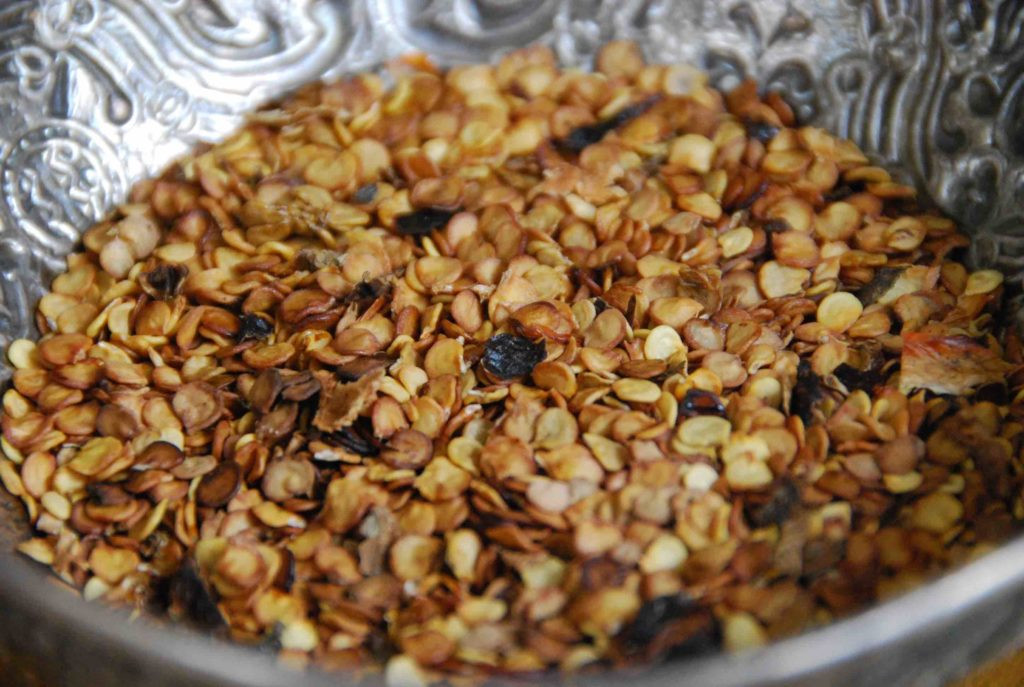 Mole Poblano 4
Mole Poblano 4
The inclusion of other seeds and spices further reflects Mexico’s rich history: sesame seeds, introduced by African slaves; anise seeds, cloves, cinnamon, and black peppercorns, arriving via Oriental trade routes; allspice from the Caribbean; and coriander, thyme, and marjoram from the Mediterranean.
To thicken the mole and impart an earthy, rustic touch, corn tortillas are used. Mexican-style bread, like bolillos or teleras—Mexican adaptations of the French baguette from the era of Emperor Maximilian—also plays a crucial role.
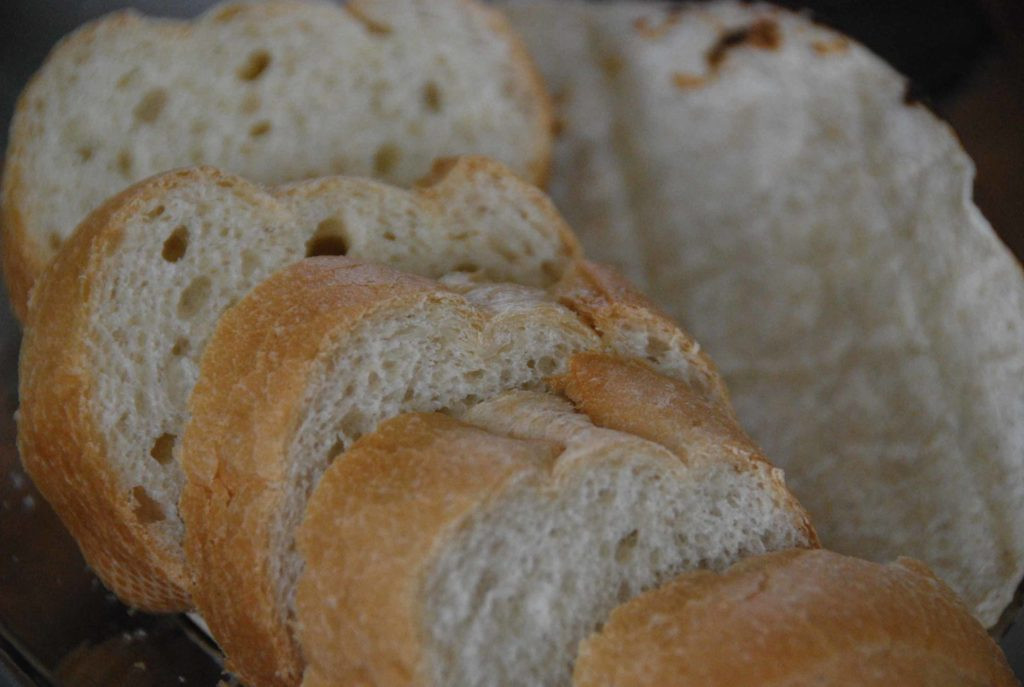 Mole Poblano 6
Mole Poblano 6
Completing the intricate balance of this dish, and perhaps as a nod to its creator, Sor Andrea de la Asunción, a nun with a well-known sweet tooth, Mexican chocolate is added. Made with toasted cacao, cinnamon, sugar, and often ground almonds, Mexican chocolate is sweeter and grainier than typical bittersweet chocolate.
It’s important to note that only a modest amount of chocolate is used; the notion that Mole Poblano is primarily a chocolate sauce is a common exaggeration.
Now that we’ve explored the ingredients, let’s begin cooking. As we proceed, you’ll notice another key characteristic of mole: the ingredients are transformed and their flavors intensified before being pureed together. This process is crucial for achieving the smooth layering of complex flavors that defines a great mole.
Start by heating lard, vegetable shortening, or oil in a large pot. Once hot, sauté the chiles until they become fragrant and slightly browned. Remove them with a slotted spoon and place them in a bowl. They should look something like this:
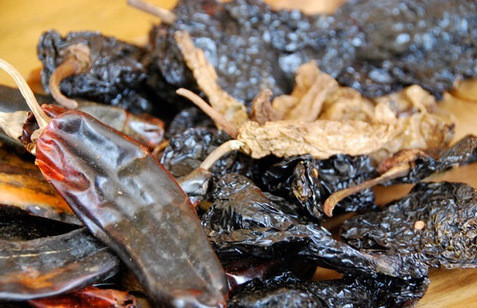 Mole Poblano 8
Mole Poblano 8
In the same pot, add the onions and garlic and cook until softened, about 2 to 3 minutes.
Create some space in the pot and add the almonds, peanuts, raisins, and pumpkin seeds. Cook for another 2 to 3 minutes.
Some traditional mole recipes call for charring, broiling, toasting, sautéing, and grinding each ingredient separately, sometimes even using different pots and pans. However, using one large, heavy pot is perfectly acceptable, as long as you give each ingredient sufficient time to cook properly before adding the next batch.
So, again, make some room in the pot to add those reserved chile seeds, AND…
 Mole Poblano 10
Mole Poblano 10
…sesame seeds, stemmed cloves, anise seeds, coriander seeds, black peppercorns, cinnamon stick, ground allspice, thyme, and marjoram. Let everything cook together for 4 to 5 minutes, allowing the spices to bloom and become fragrant.
Create space once more, and add the pre-charred or broiled tomatoes and tomatillos, along with the sliced tortillas and bread.
As you incorporate each new set of ingredients, allow them time to meld and brown together. Be careful not to let anything burn.
Next, add back the browned chiles that you set aside earlier, and thoroughly mix everything together.
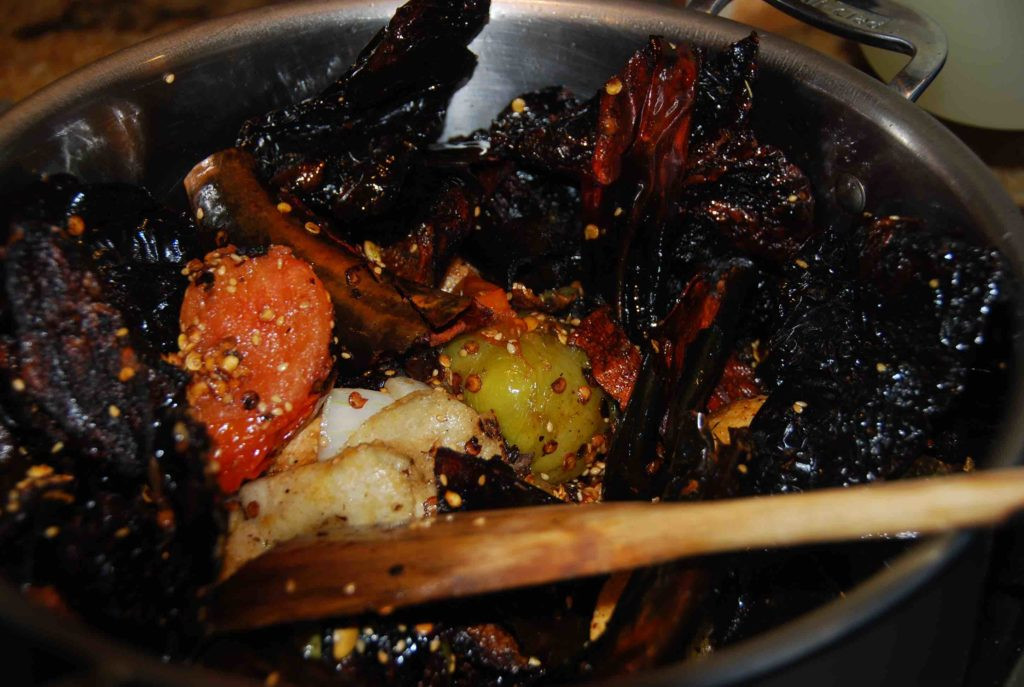 Mole Poblano 12
Mole Poblano 12
Pour in some rich, flavorful chicken broth.
Once the mixture begins to simmer, add the pieces of Mexican chocolate and stir until they are completely dissolved.
Behold the magnificent, albeit messy, stage we’ve reached!
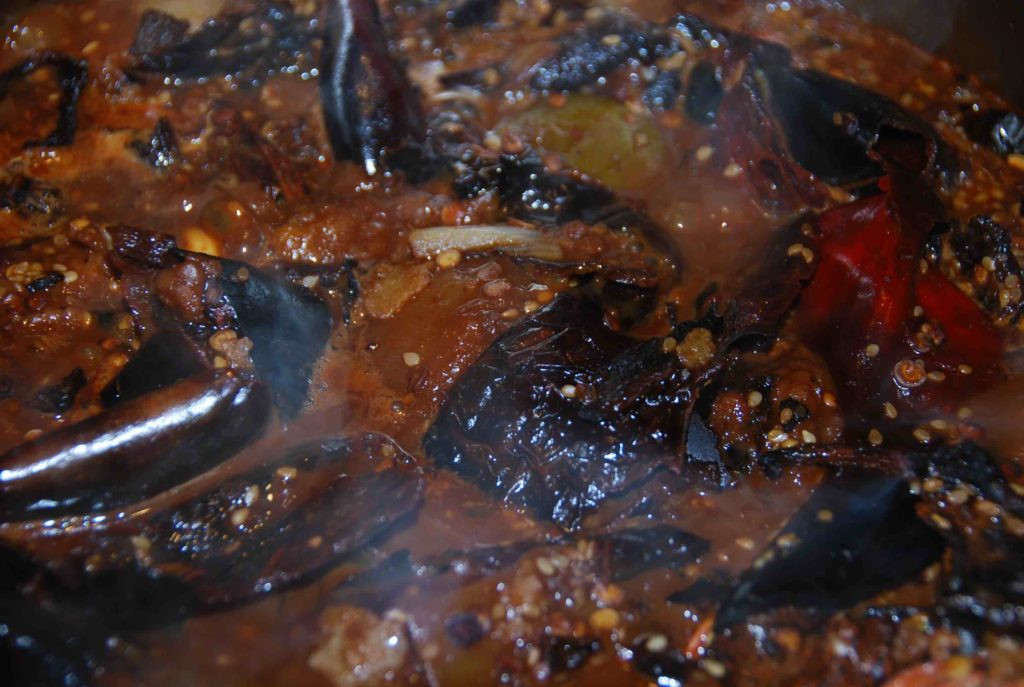 Mole Poblano 14
Mole Poblano 14
Let the mole simmer for about 15 minutes. This simmering time allows all the diverse ingredients to get to know each other and deepen their flavors.
Turn off the heat and let the mixture rest, allowing it to further develop its complexity.
Then, puree the mixture in a food processor or blender until completely smooth. Or, if you’re feeling particularly traditional, take out your molcajete and grind it by hand.
Finally, give thanks to Sor Andrea for the culinary masterpiece you are about to witness and taste! The most delicious, most scrumptious…
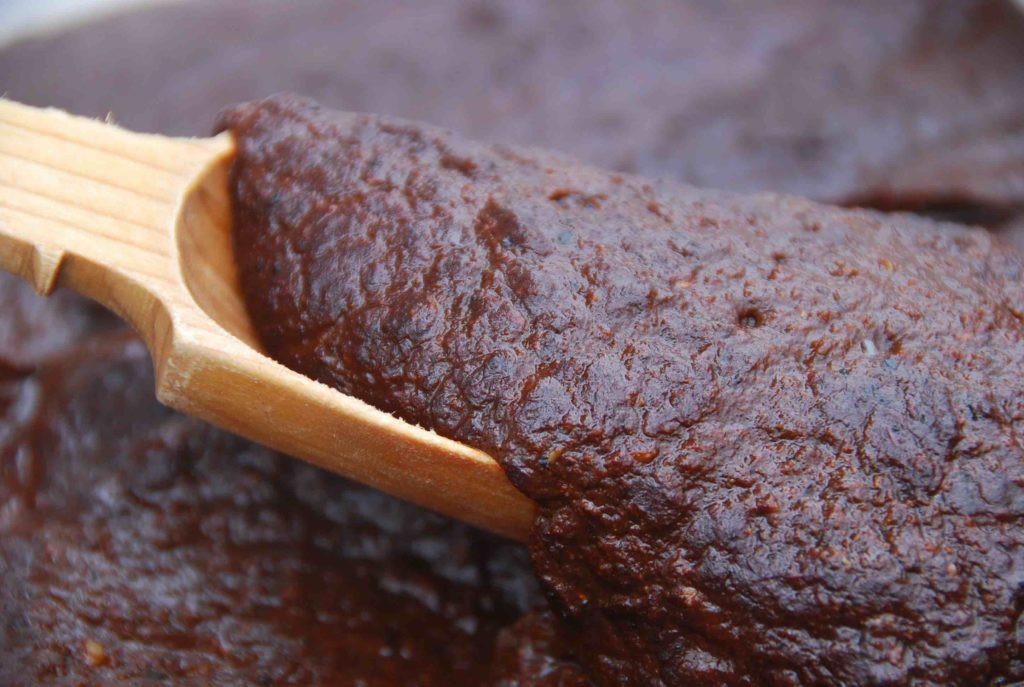 Mole Poblano 16
Mole Poblano 16
Let’s just say: it’s undeniably one of my absolute favorite moles.
Mole Poblano is incredibly versatile. Beyond the classic presentation over simply boiled chicken or turkey, garnished with lightly toasted sesame seeds, you can use this mole to create enchiladas, enmoladas, empanadas, or serve it with eggs, nopales, or potatoes. The possibilities are endless.
You might understand now why it took me a little longer to post this recipe this time: I was busy adding essential ingredients to the basics section of my blog, all in preparation for sharing this special recipe with you!
